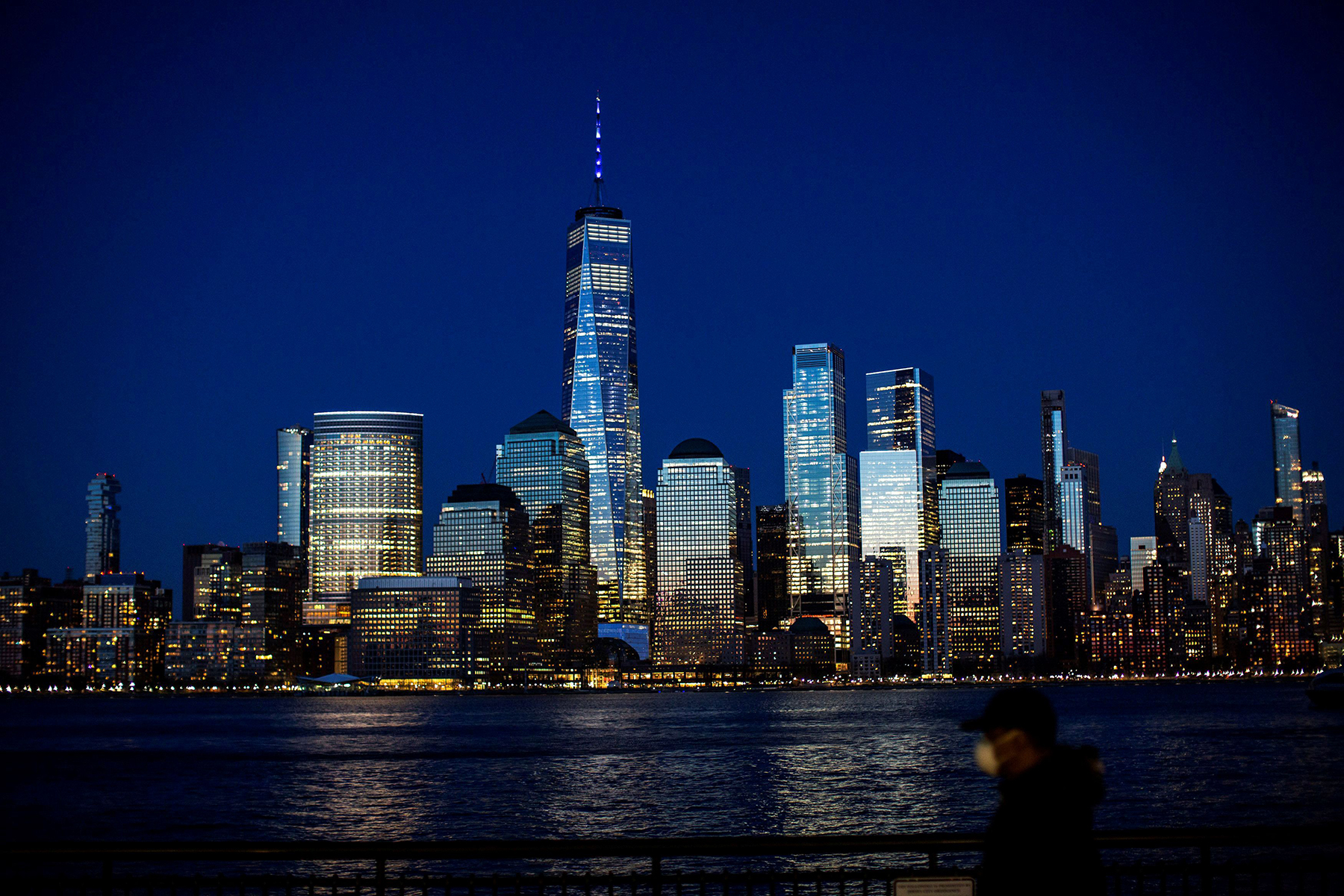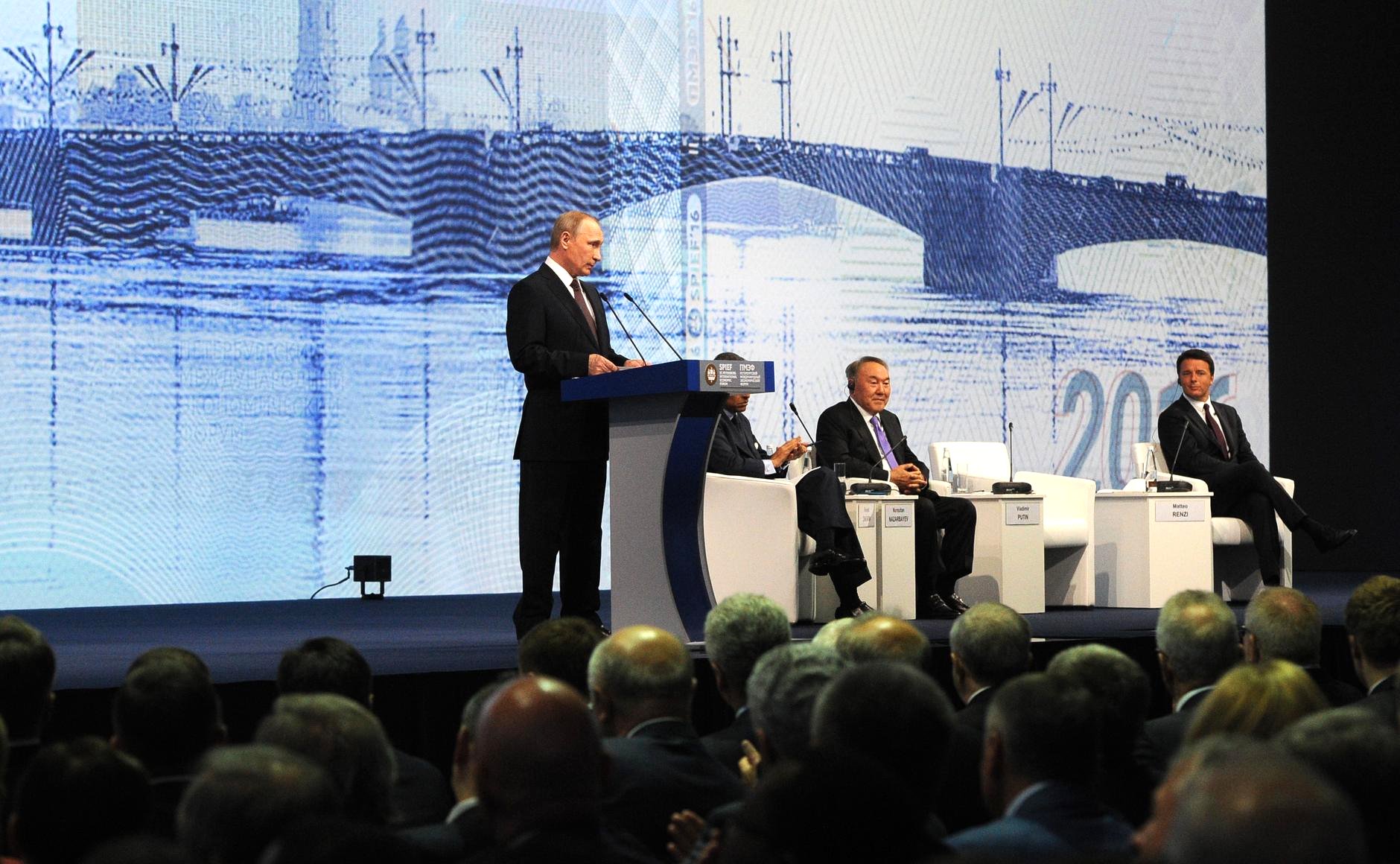There is reason to believe that the coronavirus will be around for a while. What is more, IMF experts warn that problems that existed before the pandemic will only worsen in the coming decades. One of these problems is the state of the global financial market, which is more susceptible to all kinds of financial bubbles than ever before.
When we talk about financial bubbles, we usually mean a sharp increase in the value of assets in an economic climate that has either stagnated or started to deteriorate. A similar situation is currently unfolding on the American stock market, which is experiencing an extraordinary rise in the value of hi-tech companies against the background of a record drop in GDP (by over 30 per cent in the second quarter of 2020) and a projected budget deficit (−15.5 per cent). This rise has been caused by three factors: 1) a soft monetary policy as a result of the need to service rapidly growing public and corporate debt; 2) the huge liquid resources at the disposal of legal entities and individuals that are frantically looking for ways to make a profitable investment in anticipation of the increased risks and systemic uncertainties brought about by COVID-19; and 3) the speculative excitement caused by the technologies of the fourth industrial revolution.
The global economy has fallen into the trap of a "new abnormality," where incessantly creating money does not solve pressing socioeconomic problems. Other countries are following in the footsteps of the United States, repeating its domestic policy indiscretions. This has resulted in the further deepening of social inequalities and imbalances at the national and global levels. Bearing in mind the fact that the United States’ share of global gross domestic product has been falling over the past 20 years, it is entirely possible that the U.S. dollar may be used less frequently in international transactions, even though the exchange rate proves favourable from time to time. To make matters worse, the abnormal reaction of the markets to the monetary policy of the Federal Reserve System, along with the growing political tension in the United States, increases the risk of the destabilization of the current financial system. It should be stressed here that global economic leadership has always been tied to the leading countries consolidating their positions in both the economic and financial spheres. Clearly, we have reached the point where the only thing that will help stabilize the world economy in the long term is the more active involvement of the BRICS countries in the functioning of the global financial system.
There is reason to believe that the coronavirus will not be going anywhere soon. What is more, IMF experts warn that problems that existed before the pandemic will only worsen in the coming decades. One of these problems is the state of the global financial market, which is more susceptible to all kinds of financial bubbles than ever before.
When we talk about financial bubbles, we usually mean a sharp increase in the value of assets in an economic climate that has either stagnated or started to deteriorate. A similar situation is currently unfolding on the American stock market, which is experiencing an extraordinary rise in the value of hi-tech companies against the background of a record drop in GDP (by over 30 per cent in the second quarter of 2020) and a projected budget deficit (−15.5 per cent). This rise has been caused by three factors: 1) a soft monetary policy as a result of the need to service the rapidly growing public and corporate debt; 2) the huge liquid resources at the disposal of legal entities and individuals that are frantically looking for ways to make a profitable investment in anticipation of the increased risks and systemic uncertainties brought about by COVID-19; and 3) the speculative excitement caused by the technologies of the fourth industrial revolution. In order for us to judge how likely the optimistic sentiments of the global financial markets are to change, let us consider the impact of these factors separately.
The Debt as it Stands
A key element of the “new abnormality” that has characterized both the development of the global economy as a whole and the U.S. economy, in particular, is the debt model of economic growth. Investment and business activity has stagnated as interest rates around the world are hovering around zero, while the U.S. dollar (a key reserve currency) stubbornly refuses to depreciate and has even strengthened its value on the forex markets on a number of occasions, despite the fact that the situation at home is worsening. For example, U.S. national debt increased by $4 trillion in the first nine months of 2020, from $22.7 to $26.7 trillion. This is the largest increase in U.S. national debt ever. A considerable amount of this debt is financed through the extraordinary growth of the U.S. stock market, which currently accounts for over half of the combined capitalization of the world's stock markets. A correction on the stock market (caused by an increase in interest rates, for example) could trigger numerous defaults on debt obligations. According to Fitch Ratings, more defaults were announced in the first five months of 2020 than in the whole of 2019 and may reach record numbers by the end of the year (the current record holder is 2009). And more than half of all corporate defaults around the world have occurred in North America.
Let us recall that the value of financial assets dropped by $50 trillion during the 2008–2009 crisis. However, central banks and the fiscal authorities compensated for these losses by injecting roughly the same amount of liquidity into the market. But the newly created financial resources did not jolt consumer demand, as had been hoped. Rather, they were largely swallowed up by various segments of the global financial market. International portfolio investments alone more than doubled in 2008–2019 – by $35 trillion.
The history of capitalism is not short on examples where the state tried to solve debt problems at the expense of the market, leading to the creation of financial pyramids. In 1720, for example, two giant financial bubbles burst at almost the same time in Europe. In an effort to clear themselves of the massive debts they had accumulated during the War of the Spanish Succession, the governments of France and England encouraged the growth of cash in circulation. This money was pumped into equity securities of Mississippi Company in France and the South Sea Company in England, which were joint-stock companies created with backing from their respective governments. The companies promised their investors huge profits that would come from overseas territories. The proceeds from the sale of shares were used to buy back government debt instruments. The stock market bubbles that appeared in France and Great Britain were the result of the governments trying to rid themselves of their excessive debt burdens and to stimulate their respective economies through inflation and debt-equity swaps. In a way, the current excitement on the U.S. stock market is reminiscent of the situation three hundred years ago.
A New Digital Bubble?
As of late September 2020, the four largest companies in the world by market capitalization were American digital brands: the computer giants Apple and Microsoft and the internet companies Amazon and Alphabet (Google). The total market capitalization of these companies has more than doubled this year to over $6 trillion. “Pessimists” believe that the U.S. over-the-counter (OTC) market is currently experiencing another boom similar to the dot-com bubble that burst in 2000. Meanwhile, “optimists” point to the huge success of FAANG stocks, Facebook, Apple, Amazon, Netflix and Google, as justification for the current market explosion. Shares in these companies outperformed the market throughout the 2010s, and prices have soared against the background of the pandemic. They currently make up 23 per cent of the total capitalization of the U.S. S&P 500 Index.
The growth in the market value of these companies is directly related to the activities of private and institutional investors around the world, who invest their savings in banks and various investment funds with their highly developed infrastructure in order to receive guaranteed profits. A number of retail investors have given an additional impulse to the dynamics of the OTC market by purchasing shares in newly created companies in the digital economy that have connected to free trading platforms such as Robinhood.
At the same time, the “optimists” believe that the comparisons with the dot-com bubble of 2000 are not entirely appropriate. A number of arguments support this claim: 1) the ratio between the market value of shares and the total annual profit is lower – 26.9 in September 2020 versus 45.8 in March 2000; 2) companies in the digital economy turn in real profits, as opposed to expected future returns; and 3) Nasdaq OTC hi-tech growth rates are more moderate – 23 per cent per year on average, compared to 43 per cent per year in the seven years before the tech bubble burst in 2000.
The dynamics of the market on the eve of the financial crisis in 2008–2009 were also characterized by an "irrational euphoria" similar to what we are seeing today. Back then, in the depths of the crisis, the G20 introduced a supranational financial monitoring system that was designed to prevent destabilizing spikes and falls in asset prices. However, experience has taught us that regulation cannot keep up with market innovation and is perennially unprepared for new challenges, primarily the digitalization of the global economy.
Technology and Politics
Historically, financial bubbles have tended to form whenever new revolutionary technologies have appeared, be it the invention of railways, electricity, automobiles, etc. Many new technologies have appeared during the Fourth Industrial Revolution (from smartphones and 3D printers to blockchain technologies and artificial intelligence) that have led to the mass automation of business processes and, consequently, the loss of jobs for a large part of the workforce, thus reducing production and operating costs significantly.
At the same time, we have not seen galloping inflation as a natural market reaction during this global crisis (all other things being equal) to the cheap money policy that has dominated the past decade. On the one hand, prices have been kept in check by the pandemic, which has pushed households and companies to hold onto their savings and made consumption more difficult due to the partial blocking of the economy. On the other hand, in the present context, a sizeable portion of the newly created liquidity is immediately swallowed up by the stock market, the U.S. stock market in particular, which continues to grow thanks to the advance funding of new technologies that are being developed at a fantastic pace. Exactly how long such a model can survive depends on at least three factors: 1) whether or not the soft monetary policy of near-zero or negative interest rates pursued by central banks will continue; 2) the ability of the market to adapt to new technological transformations; and 3) the smooth running of the international monetary system based on the U.S. dollar.
As for the latter, its functioning largely depends on the political system in the United States, and on the results of the November presidential elections in particular. One of three things will likely happen after that: 1) the current configuration of the global financial system will remain in place, with a few minor alterations here and there; 2) the existing system will undergo a major upheaval; and 3) the global financial system as we know it will collapse and a new model will take its place.
If the first scenario plays out, then the world economy will most likely continue to function in the same institutional format that we know today. If the second scenario prevails, then the radical reform of the existing system of global institutions could give the RIC countries (Russia, India and China) the bargaining power to insist on more favourable conditions for their integration into the world economy (for example, by moving away from reliance on the U.S. dollar in international transactions, promoting the use of their national currencies more actively, re-evaluating their positions within the International Monetary Fund and the World Bank alongside their partners in BRICS in order to effectively obtain a collective veto power, etc.). The third scenario would make it possible to create regional monetary and financial systems (as full-fledged independent financial structures of the emerging multipolar world) on the basis of various regional financial institutions that already exist, increasing the role of national currencies in mutual settlements and international financial instruments (or through the creation of new international liquidity in the form of national collective settlement monetary units).
Where Does Russia Stand amid the Global Turbulence?
The Russian economy demonstrated greater resilience during the first wave of the coronavirus crisis than the economies of both developed countries and the economies of its partners in BRICS. Despite the sharp decline in world prices for carbon fuel (Russia’s main export), in terms of key macroeconomic indicators, Russia has managed to maintain more stable positions than the G7 countries. As a result, the IMF predicts that Russia will have the lowest budget deficit among the world’s major economies by the end of 2020 (−4.8 per cent), with relatively low unemployment (4.9 per cent).
The Russian Federation is, in a sense, protected from financial bubbles as (unlike the United States) as it is more focused on developing the real sector of the economy rather than the financial sector. At the same time, the main problem of Russia's integration into the global economy is the lack of stabilizing mechanisms to counter the volatile and hard-to-predict elements of the global financial market. We are talking here about the lack of a reserve currency, something that many countries use to protect themselves against external shocks, especially during periods of global crisis, when the demand for reserve assets rises sharply. Let us consider the following example. Russia has been a net creditor in the global financial system for years. As of year-end 2019, Russia’s external financial assets exceeded its external financial liabilities by $358 billion. Meanwhile, its investment income balance amounted to −$50 billion. This lop-sidedness is down to the fact that Russia places its international reserves in low-yield foreign assets and serves its foreign financial liabilities at higher interest rates. What this means is that the Russian Federation has been subsidizing those countries that issue reserve currencies for years while not always receiving adequate compensation and now living in economic isolation in the form of economic sanctions. In this context, Russia urgently needs to create its own reserve currency similar to the transferable rouble that the Soviet Union used in its trade with the Council for Mutual Economic Assistance in 1964–1990 and which existed long before other collective currencies (such as the special drawing rights, the European Currency Unit and the euro) were developed. This mechanism removed a number of inconsistencies at the regional level (the problem of imbalances in particular) that we are now seeing in connection with the use of the U.S. dollar as a means of carrying out international settlements, loans and investments around the world.
An oft-cited report by Goldman Sachs predicts that Brazil, Russia, India and China (the BRIC countries) will all be among the world’s top five economies by 2050 and, tellingly, the stock market is not the main source of financial resources for any of them. A common problem for the BRIC countries is the need to develop the enormous potential of their domestic markets by implementing large-scale infrastructure projects. A kind of dual system of monetary circulation whereby foreign trade is carried out using monetary units of account could help make this happen. Such a model would make it possible to separate the intrinsic value of money (its purchasing power) from its extrinsic value (its exchange rate). This is necessary to prevent newly created value (through the financial market) flowing from regions with low productivity to regions with high productivity. This is precisely what is happening in the Eurozone, and it is deepening the structural imbalances in the single European market. In addition, such a system would help resolve the issue of creating international liquidity without the need to move the national currency out of circulation to form unproductive national reserves or carry out speculative transactions.
Conclusion
The global economy has fallen into the trap of “new abnormality,” where incessantly creating money does not solve pressing socioeconomic problems. Other countries are following in the footsteps of the United States, repeating its domestic policy. This has resulted in the further deepening of social inequalities and imbalances at the national and global levels. Bearing in mind the fact that the United States’ share of global gross domestic product has been falling over the past 20 years, it is entirely possible that the U.S. dollar may be used less frequently in international transactions, even though the exchange rate proves favourable from time to time. To make matters worse, the unusual reaction of the markets to the monetary policy of the Federal Reserve System, along with the growing political tension in the United States, increases the risk of the destabilization of the current financial system. It should be stressed here that global economic leadership has always been tied to the leading countries consolidating their positions in both the economic and financial spheres. Clearly, we have reached the point where the only thing that will help stabilize the world economy in the long term is the more active involvement of the BRICS countries in the functioning of the global financial system.








